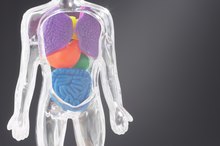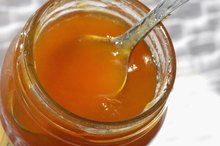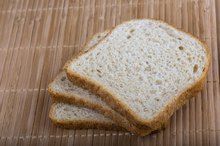What does fact checked mean?
At Healthfully, we strive to deliver objective content that is accurate and up-to-date. Our team periodically reviews articles in order to ensure content quality. The sources cited below consist of evidence from peer-reviewed journals, prominent medical organizations, academic associations, and government data.
- National Digestive Diseases Information Clearinghouse: The Digestive System and How It Works
- Cleveland Clinic: The Structure and Function of the Digestive System
The information contained on this site is for informational purposes only, and should not be used as a substitute for the advice of a professional health care provider. Please check with the appropriate physician regarding health questions and concerns. Although we strive to deliver accurate and up-to-date information, no guarantee to that effect is made.
What Digestive Functions Occur in the Mouth?
Each structure in your gastrointestinal tract -- which includes your mouth, esophagus, stomach, small intestine, large intestine and accessory organs -- plays a critical and unique role in digestion. Although most digestion occurs in the small intestine, digestion itself begins in the mouth.
If you are experiencing serious medical symptoms, seek emergency treatment immediately.
Breaking Down Digestion
The digestion process is a combination of chemical and mechanical digestion. Chemical digestion breaks down food via a chemical change, in which the digestive juices and enzymes break down food into components small enough to enter the GI tract, the blood cells or the lymph cells. Mechanical digestion breaks down food via chewing or grinding in the mouth as well as via the muscular activity in the stomach and intestines. Both types of digestion begin in the mouth.
- The digestion process is a combination of chemical and mechanical digestion.
- Both types of digestion begin in the mouth.
Slippery Saliva
Digestive Breakdown of Proteins
Learn More
As soon as you think about food, see food or smell food, your salivary glands release saliva, which helps digestion. Each component of saliva -- including water, mucus, electrolytes and enzymes -- serves a unique function. The enzyme in saliva, which is called salivary amylase, begins the chemical breakdown of starches. Mucus lubricates the food, which helps food stick together and mucus also coats and protects the inside of your mouth. Saliva also starts to dissolve small food particles and makes dry food moist enough to swallow comfortably.
- As soon as you think about food, see food or smell food, your salivary glands release saliva, which helps digestion.
- Mucus lubricates the food, which helps food stick together and mucus also coats and protects the inside of your mouth.
Thrashing Teeth and Tongue
Your teeth and tongue play a role in mechanical digestion. When you chew, your teeth cut and grind your food into smaller pieces that are easier for you to swallow and for your digestive system to break down 45. Your tongue moves the food around your mouth and mixes it with saliva so that the components of saliva can perform their functions.
Moving Things Along
Digestive Juices & Enzymes
Learn More
Once the food is broken down and mixed with saliva, it is referred to as a bolus, which is a mass of food soft enough for you to swallow. Your tongue pushes the bolus to the back of your mouth and into your pharynx, which is the cavity that connects the mouth to the esophagus. Once the bolus enters the pharynx, your involuntary swallowing reflex kicks in and the food begins its travel down your esophagus.
- Once the food is broken down and mixed with saliva, it is referred to as a bolus, which is a mass of food soft enough for you to swallow.
- Once the bolus enters the pharynx, your involuntary swallowing reflex kicks in and the food begins its travel down your esophagus.
Related Articles
References
- Nutrition and You; Joan Salge Blake
- Better Health Channel: Digestive System
- Cleveland Clinic: The Structure and Function of the Digestive System
- Kids Health: Digestive System
- Saddleback College: Digestive System
- United States Department of Health and Human Services, National Digestive Diseases Information Clearinghouse (NDDIC). Your Digestive System and How It Works.
- Peyrot des gachons C, Breslin PA. Salivary Amylase: Digestion and Metabolic Syndrome. Curr Diab Rep. 2016;16(10):102. doi:10.1007/s11892-016-0794-7
- Saran M. Anatomy, Head and Neck, Larynx Vocal Cords. StatPearls [Internet].
- Azzouz LL. Physiology, Large Intestine. StatPearls [Internet].
- Kessler AT, Bhatt AA. Review of the Major and Minor Salivary Glands, Part 1: Anatomy, Infectious, and Inflammatory Processes. J Clin Imaging Sci. 2018;8:47. doi:10.4103/jcis.JCIS_45_18
- Cheng LK, O'grady G, Du P, Egbuji JU, Windsor JA, Pullan AJ. Gastrointestinal system. Wiley Interdiscip Rev Syst Biol Med. 2010;2(1):65-79. doi:10.1002/wsbm.19
- Greenwood-van meerveld B, Johnson AC, Grundy D. Gastrointestinal Physiology and Function. Handb Exp Pharmacol. 2017;239:1-16. doi:10.1007/164_2016_118
Writer Bio
Lindsay Boyers has a Bachelor of Science in nutrition from Framingham State College and a certificate in holistic nutrition from the American College of Healthcare Sciences. She is also a licensed aesthetician with advanced training in skincare and makeup. She plans to continue on with her education, complete a master's degree program in nutrition and, ultimately, become a registered dietitian.









